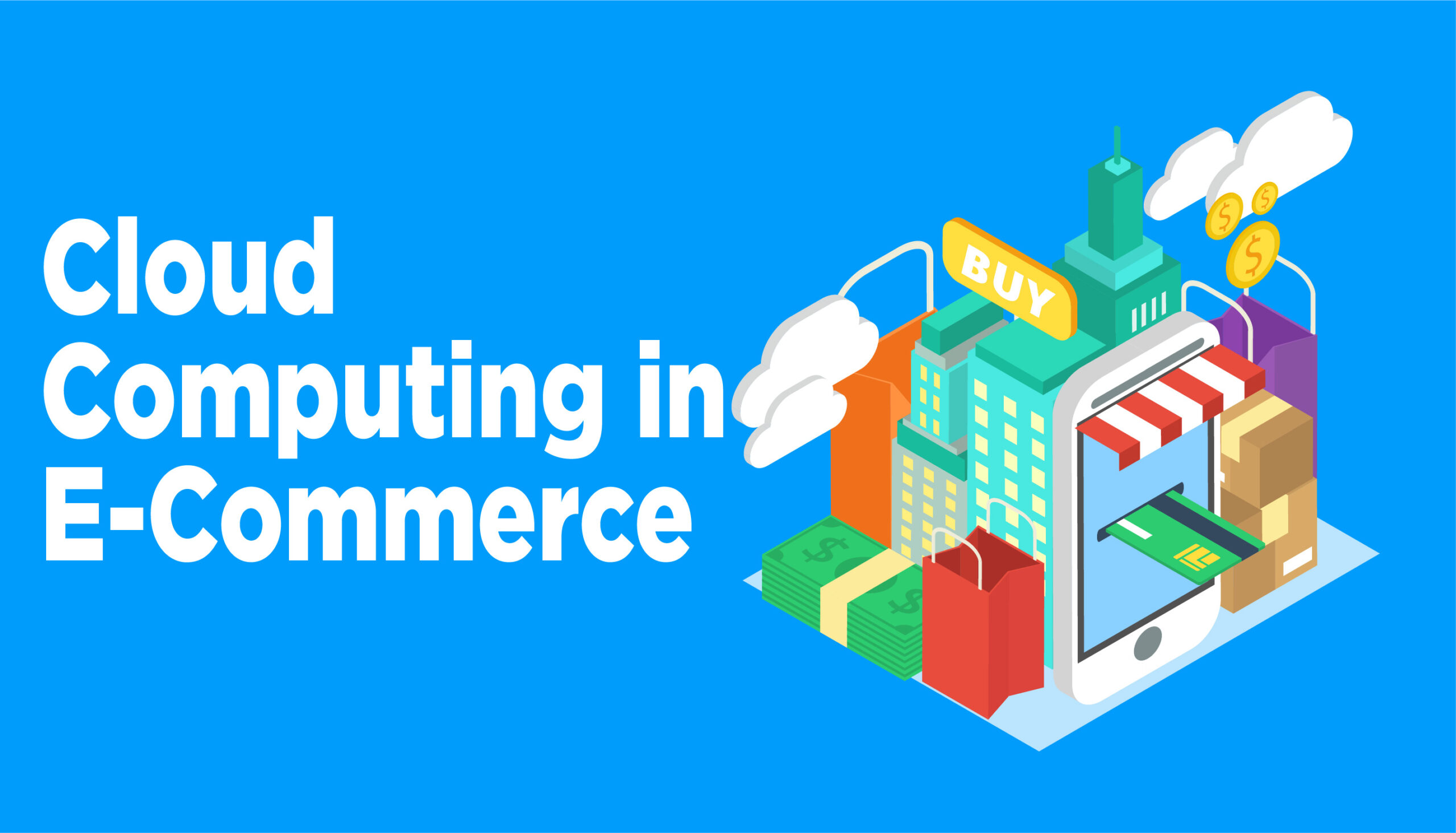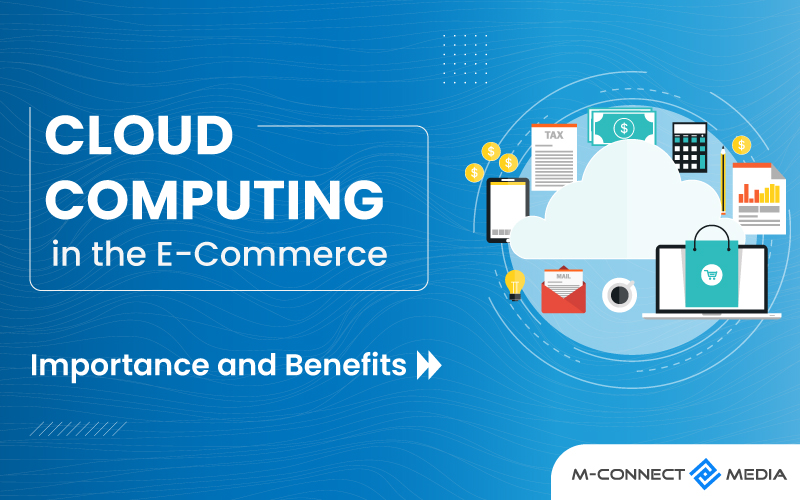Understanding the Cloud E-commerce Landscape
In today’s fast-paced and increasingly digital world, expanding one’s digital presence has become a top priority for businesses of all sizes. A powerful tool to achieve this goal is cloud e-commerce, which has been revolutionizing the online shopping experience by offering unparalleled flexibility, scalability, and cost efficiency. By harnessing the power of cloud computing, businesses can now reach a broader audience, streamline their operations, and reduce IT overhead costs.
Cloud e-commerce platforms enable businesses to quickly adapt to changing market conditions and customer demands. By utilizing a cloud-based infrastructure, businesses can easily scale their online stores during peak shopping seasons or when introducing new products. This scalability not only ensures a seamless shopping experience for customers but also helps businesses maintain optimal performance levels, ultimately driving sales and revenue growth.
Moreover, cloud e-commerce solutions offer enhanced security features, ensuring that sensitive customer data remains protected. Automatic updates and patches further strengthen security measures, reducing the risk of data breaches and cyber attacks. Additionally, cloud-based platforms provide robust disaster recovery options, ensuring business continuity even in the face of unforeseen circumstances.
Cost efficiency is another significant advantage of cloud e-commerce. By eliminating the need for on-premises servers, businesses can save on capital expenditures and reduce their overall IT overhead. Furthermore, cloud providers typically offer a pay-as-you-go pricing model, allowing businesses to only pay for the resources they actually use. This flexibility can lead to substantial cost savings, especially for small and medium-sized enterprises (SMEs).

Traditional E-commerce vs. Cloud E-commerce: A Comparative Analysis
As businesses increasingly recognize the benefits of expanding their digital presence with cloud e-commerce, it’s essential to understand how these platforms compare to traditional e-commerce solutions. Traditional e-commerce platforms, which typically require on-premises servers and in-house IT management, often come with significant upfront costs and ongoing maintenance requirements.
Cloud e-commerce platforms, on the other hand, offer a more flexible and cost-efficient alternative. By utilizing a cloud-based infrastructure, businesses can reduce their IT overhead, as they no longer need to invest in expensive hardware or maintain on-site servers. Additionally, cloud providers typically handle software updates and security patches, ensuring that businesses always have access to the latest features and security measures.
Another critical advantage of cloud e-commerce platforms is their enhanced security features. Cloud providers often employ advanced encryption methods and multi-factor authentication, ensuring that sensitive customer data remains protected. Furthermore, automatic updates and patches help maintain strong security measures, reducing the risk of data breaches and cyber attacks. This is in contrast to traditional e-commerce platforms, where businesses are responsible for implementing and maintaining security measures, often leading to vulnerabilities and potential breaches.
Scalability is another area where cloud e-commerce platforms shine. Traditional e-commerce solutions can struggle to handle sudden spikes in traffic or increased sales volumes, leading to slow load times and potential downtime. Cloud e-commerce platforms, however, can easily scale to meet changing demands, ensuring a seamless shopping experience for customers and maintaining optimal performance levels for businesses.
Lastly, cloud e-commerce platforms offer greater flexibility for businesses looking to expand their digital presence. With a wide range of integration options and customization capabilities, businesses can tailor their online stores to meet their unique needs and goals. This flexibility is often limited in traditional e-commerce platforms, where businesses may be constrained by the capabilities of their on-premises servers and software.

Selecting the Right Cloud E-commerce Provider: Key Considerations
Expanding digital presence with cloud e-commerce solutions offers numerous benefits, including increased flexibility, scalability, and cost efficiency. However, choosing the right cloud e-commerce provider is crucial to fully realizing these advantages. Here are some essential factors to consider when selecting a cloud e-commerce platform:
Integration Capabilities
One of the primary benefits of cloud e-commerce platforms is their ability to integrate with various third-party tools and services. Ensuring seamless integration with existing systems, such as CRM, ERP, or marketing automation platforms, is essential for maintaining a cohesive and efficient workflow. Look for a provider that offers a wide range of pre-built integrations and API access for custom integrations.
Customization Options
Every business has unique needs and goals, so it’s essential to choose a cloud e-commerce platform that offers ample customization options. From tailoring the user interface to match your brand identity to creating custom workflows and automations, a flexible platform can help streamline operations and create a more engaging shopping experience for your customers.
Vendor Reputation
When selecting a cloud e-commerce provider, it’s crucial to consider their reputation and track record. Look for established vendors with a proven history of delivering reliable, secure, and innovative solutions. Research customer reviews, industry accolades, and case studies to gauge the provider’s overall performance and commitment to customer success.
Scalability
As your business grows, your e-commerce platform should be able to scale with you. Ensure that the cloud e-commerce provider can accommodate increased traffic, sales volumes, and functional requirements without sacrificing performance or security. A scalable platform enables businesses to expand their digital presence without worrying about infrastructure limitations.
Security and Data Privacy
Protecting sensitive customer data and maintaining robust security measures are paramount in e-commerce. Look for a cloud e-commerce provider that adheres to industry best practices and complies with relevant data privacy regulations, such as GDPR or CCPA. Additionally, ensure that the provider offers advanced security features, such as multi-factor authentication, encryption, and regular security audits.
Customer Support
Reliable and responsive customer support is essential when operating an e-commerce business. Choose a cloud e-commerce provider that offers comprehensive support resources, including documentation, tutorials, and a dedicated support team. A strong support system can help businesses quickly resolve issues, optimize their platform, and ultimately, enhance their digital presence.

How to Transition Your Business to the Cloud: A Comprehensive Guide
Expanding digital presence with cloud e-commerce offers numerous benefits, including increased flexibility, scalability, and cost efficiency. However, migrating your e-commerce operations to the cloud can be a complex process. Here’s a step-by-step guide to help you transition smoothly:
Step 1: Assess Your Current E-commerce Infrastructure
Before making the move to the cloud, evaluate your existing e-commerce setup. Identify the strengths and weaknesses of your current platform, as well as any limitations or constraints that could impact the migration process. This assessment will help you determine the ideal cloud e-commerce solution for your business and ensure a seamless transition.
Step 2: Choose the Right Cloud E-commerce Provider
Selecting the right cloud e-commerce provider is crucial to the success of your migration. Consider factors such as integration capabilities, customization options, vendor reputation, scalability, security, and customer support. Research various providers, compare their offerings, and select the one that best aligns with your business needs and goals.
Step 3: Plan Your Migration Strategy
Develop a detailed migration plan that outlines the steps required to move your e-commerce operations to the cloud. This plan should include timelines, resource allocations, and contingency measures. Additionally, ensure that you have a clear communication strategy in place to keep stakeholders informed throughout the process.
Step 4: Prepare Your Data for Migration
Proper data preparation is essential for a successful migration. Cleanse, normalize, and organize your data to ensure a smooth transition. Additionally, consider how you will manage data migration, including any potential downtime or disruptions to your e-commerce operations.
Step 5: Test Your New Cloud E-commerce Platform
Before going live with your new cloud e-commerce platform, conduct thorough testing to ensure that all features and functionalities are working as expected. This testing phase should include performance, security, and usability tests to identify and address any issues before launch.
Step 6: Launch and Monitor Your Cloud E-commerce Platform
Once you’ve completed testing, you’re ready to launch your new cloud e-commerce platform. Monitor the system closely during the initial stages to ensure that it’s performing as expected and address any issues that may arise. Regularly review and optimize your platform to maximize its potential and maintain a strong digital presence.
Expanding digital presence with cloud e-commerce requires careful planning and execution. By following these steps, you can ensure a smooth transition and take full advantage of the flexibility, scalability, and cost efficiency offered by cloud e-commerce solutions.

Maximizing the Potential of Cloud E-commerce: Best Practices
Expanding digital presence with cloud e-commerce offers numerous benefits, including increased flexibility, scalability, and cost efficiency. To fully leverage these advantages, it’s essential to follow best practices for optimizing site performance, utilizing data analytics, and implementing robust marketing strategies. Here are some key considerations:
Optimizing Site Performance
A slow-loading e-commerce site can negatively impact user experience and lead to lost sales. To ensure optimal site performance, consider the following:
- Optimize images and media files for faster loading times.
- Implement caching to reduce server load and improve load times.
- Regularly monitor site performance and address any issues promptly.
Utilizing Data Analytics
Cloud e-commerce platforms provide access to valuable data that can help you better understand your customers and optimize your operations. Consider the following:
- Track user behavior and preferences to inform product offerings and marketing strategies.
- Monitor site traffic and conversion rates to identify areas for improvement.
- Leverage A/B testing to optimize site design and functionality.
Implementing Robust Marketing Strategies
Effective marketing is essential for driving traffic and increasing sales. Consider the following:
- Develop targeted email campaigns to engage customers and promote new products or promotions.
- Optimize your site for search engines to improve visibility and attract organic traffic.
- Leverage social media to connect with customers and promote your brand.
Expanding digital presence with cloud e-commerce requires a strategic approach to site optimization, data analytics, and marketing. By following these best practices, you can maximize the potential of your cloud e-commerce platform and drive business growth.

Real-World Success Stories: Cloud E-commerce in Action
Expanding digital presence with cloud e-commerce has enabled numerous businesses to achieve remarkable success. By leveraging the flexibility, scalability, and cost efficiency of cloud-based platforms, these companies have transformed their e-commerce operations and driven business growth. Here are some inspiring examples:
Brand_1: A Global Fashion Retailer
By transitioning to a cloud e-commerce platform, Brand_1 was able to streamline its operations and expand its digital presence to new markets. The company leveraged data analytics to better understand customer preferences and optimize its product offerings. As a result, Brand_1 experienced a 30% increase in online sales and a 20% improvement in customer satisfaction.
Brand_2: A Direct-to-Consumer Health and Wellness Brand
Brand_2 utilized a cloud e-commerce platform to implement a robust marketing strategy, including targeted email campaigns and social media engagement. By leveraging these channels, the company was able to connect with customers and promote its brand effectively. As a result, Brand_2 experienced a 50% increase in website traffic and a 40% increase in online sales.
Brand_3: A Specialty Food and Beverage Company
Brand_3 leveraged the scalability of its cloud e-commerce platform to manage spikes in demand during peak seasons. By ensuring optimal site performance and reducing downtime, the company was able to maintain a positive customer experience and drive business growth. As a result, Brand_3 experienced a 25% increase in online sales and a 15% improvement in customer satisfaction.
Expanding digital presence with cloud e-commerce offers numerous benefits for businesses of all sizes and industries. By following best practices and learning from real-world success stories, you can leverage the power of cloud-based e-commerce solutions to drive business growth and achieve long-term success.

Navigating Potential Challenges and Risks
Expanding digital presence with cloud e-commerce offers numerous benefits, but it’s essential to be aware of potential challenges and risks. By understanding these concerns and implementing practical solutions, you can mitigate potential issues and ensure a successful cloud e-commerce experience.
Data Privacy
Data privacy is a critical concern for businesses of all sizes. When expanding digital presence with cloud e-commerce, it’s essential to ensure that customer data is protected and secure. Look for cloud e-commerce platforms that comply with relevant data privacy regulations, such as the General Data Protection Regulation (GDPR) and the California Consumer Privacy Act (CCPA). Additionally, consider implementing data encryption and two-factor authentication to further enhance data security.
Security Breaches
Security breaches can have a devastating impact on businesses, resulting in lost revenue, damaged reputations, and legal action. To mitigate the risk of security breaches, look for cloud e-commerce platforms that offer robust security features, such as firewalls, intrusion detection systems, and regular security audits. Additionally, consider implementing a comprehensive cybersecurity plan that includes employee training, incident response protocols, and regular security assessments.
Vendor Lock-In
Vendor lock-in is a common concern for businesses that expand their digital presence with cloud e-commerce. To mitigate the risk of vendor lock-in, look for cloud e-commerce platforms that offer flexible pricing models, open APIs, and easy data migration options. Additionally, consider diversifying your cloud e-commerce strategy by using multiple vendors or a hybrid cloud approach.
Expanding digital presence with cloud e-commerce offers numerous benefits, but it’s essential to be aware of potential challenges and risks. By understanding these concerns and implementing practical solutions, you can mitigate potential issues and ensure a successful cloud e-commerce experience.

The Future of Cloud E-commerce: Trends and Predictions
Expanding digital presence with cloud e-commerce is no longer a trend of the future but a present-day reality. As businesses continue to embrace cloud-based e-commerce solutions, new trends and technologies are emerging that promise to revolutionize the industry. By understanding these emerging trends and implementing innovative solutions, businesses can stay ahead of the curve and maximize their digital presence.
Artificial Intelligence (AI)
AI is transforming the way businesses operate, and cloud e-commerce is no exception. By leveraging AI, businesses can automate routine tasks, personalize the customer experience, and make data-driven decisions. For example, AI-powered chatbots can provide 24/7 customer support, while predictive analytics can help businesses forecast inventory needs and optimize pricing strategies.
Virtual Reality (VR) and Augmented Reality (AR)
VR and AR technologies are changing the way customers interact with e-commerce platforms. By providing immersive shopping experiences, businesses can increase customer engagement, reduce return rates, and drive sales. For example, IKEA’s AR app allows customers to visualize furniture in their own homes before making a purchase.
Internet of Things (IoT)
IoT devices are becoming increasingly prevalent in e-commerce, providing businesses with new ways to connect with customers and streamline operations. For example, smart devices can automatically reorder products when they run low, while RFID tags can track inventory levels in real-time.
Headless Commerce
Headless commerce is an emerging trend that separates the front-end and back-end of e-commerce platforms, providing businesses with greater flexibility and customization options. By decoupling the front-end and back-end, businesses can create unique customer experiences, integrate with multiple channels, and streamline operations.
Expanding digital presence with cloud e-commerce is an ongoing process, and staying up-to-date with emerging trends and technologies is essential for success. By leveraging AI, VR and AR, IoT, and headless commerce, businesses can stay ahead of the curve and maximize their digital presence.

